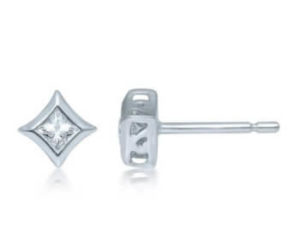Retail Remains Robust, But Challenges Loom
The coming year promises a robust retail environment, as a growing economy supports greater purchasing power, reports Moody’s Analytics, a New York City based economic research firm.
Retailers will enjoy brisk economic tail winds in 2019, says Moody’s, attributing liberal spending to a strong labor ![]() market, while a robust business climate is fueling higher corporate profits. But economists see the signs of an inevitable market correction, forecasting recession by 2020.
market, while a robust business climate is fueling higher corporate profits. But economists see the signs of an inevitable market correction, forecasting recession by 2020.
Core retail sales (excluding automobiles and gasoline) are expected to grow 4.7% in 2019, reports Moody’s. Scott Hoyt, the firm’s senior director of consumer economics, cites “happy shoppers” as driving this favorable retail environment. He cites the fiscal stimulus in the form of tax cuts, as well as the tight job market as positives for consumers.
This healthy consumer sentiment reflects the energies of a larger economy that is still growing. “The business cycle has entered its boom phase,” according to Moody’s managing director of industry economics, Sophia Koropeckyj. The Gross National Product (GNP), the most commonly accepted measure of economic growth, is expected to grow at a 2.7% pace in 2019.
Despite the positive outlook, the GNP forecast falls short of the 3% growth anticipated when the numbers are finally tallied for 2018, and is also less than the 5% surge expected for the holiday season, November through January. Hoyt says that while the deficit-financed tax cuts at the start of 2018 lifted growth, no additional increases are expected in after-tax income in 2019. Moreover, job growth will be slower because there are fewer available workers. And interest rates will likely be higher, which can have a mitigating effect on the economy.
Moody’s expects unemployment to drop to 3.4% by the end of 2019, down from the 3.7% recorded at the end of 2018. “The fundamentals of the labor market look good at least into the mid-year of 2019,” cites Hoyt. “The nation is adding jobs faster than the growth in the wage-earning generation, so we expect a further tightening of the labor market in 2019.”
 Challenges Loom
Challenges Loom
Manufacturers like Michael Lerche, COO of Goldstar Jewellery, based in New York City, are worried that our country is headed for a major recession. “The tax cuts blew up our deficit and the day of reckoning is coming.” While he expects 2019 to be a decent year, he does not anticipate huge growth year-over-year.
The nation is experiencing robust economic growth, tightening labor and product markets, intensifying wage and price pressures, monetary tightening, and higher interest rates, which characterize a business cycle nearing its end, just prior to a recession, cites Koropeckyj, who notes that the wild cards are tariffs and the rise of protectionist trade policies.
Watch for important market indicators early in 2019, cites Hoyt. “Keep a close eye on what is going on with tariffs, and is there a risk of a trade war. Watch for indications about the anticipated pace of interest rate hikes from the Federal Reserve. At some point that will start to dampen growth.”
Merchants well positioned for success in 2019 are those investing in technology and adapting to the changing buying patterns and habits of consumers today, says Jeffrey Cohen, KGS Jewels, New York City. It’s imperative for retailers to meet shoppers in the way they like to shop, whether that means selling in store, online or combinations thereof (i.e. order online, pick up in store).
Theresa Namie, merchandise manager for the Minneapolis Minnesota based manufacturer Ostbye emphasizes the ![]() importance of vendor-retailer partnerships for mutual success. She advocates jewelers take advantage of vendor resources offered like advertising material, photography, special programs and displays, and social media engagement as part of their strategy.
importance of vendor-retailer partnerships for mutual success. She advocates jewelers take advantage of vendor resources offered like advertising material, photography, special programs and displays, and social media engagement as part of their strategy.
The differentiating factor Lerche sees for traditional jewelry stores in 2019 is a well-trained staff. “It has nothing to do with product or demographic. Retailers must invest a portion of their budget on helping their store run efficiently, and if your staff is good, your sales are too. This is always a challenge for retailers, but worth the investment of time and resources. Better training at the store level is imperative for future success.”







